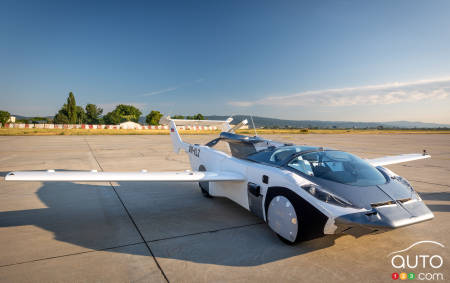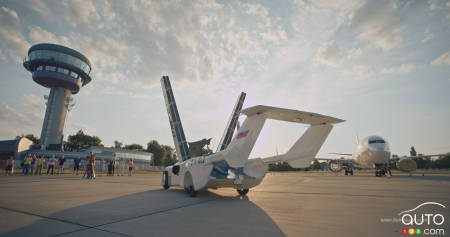The flying car is one of the oldest dreams of man since... the car has existed. Multiple tests have been conducted over the decades, but nothing concrete has made it to the road. Or in the air.
The pace of development has picked up in recent years, as a dozen companies (including Hyundai, GM, Stellantis, Mercedes and Audi, among others) work or collaborate to develop what could be called a flying vehicle; in most cases, they are essentially flying machines capable of vertical takeoffs and landings, designed to transport passengers mainly in the air from point A to point B. But there are also vehicles capable of flying and driving substantial distances in development. Like the AirCar, which last week flew about 100 km between two airports in Slovakia, before transforming itself into a car and taking the road.
This is the true definition of a flying car. The video included here shows you what the vehicle is capable of.
The AirCar prototype is built by a Slovakian company, Klein-Vision. The 35-minute flight was made between Nitra and Bratislava, after which the vehicle’s inventor and pilot, Stefan Klein, folded the wings of the aircraft and retracted its tail, an operation that takes about three minutes. The car then drove off, to the applause of a crowd of onlookers and supporters.

Stefan Klein has been working on prototypes for 30 years and has accumulated 40 hours of flight time along the way. This was actually the 142nd take off-landing of the aircraft, but its first flight between two cities. During its time in the air, the prototype flew at about 90 knots, or 167 km/h. Klein said the aircraft had been flown to 8,200 ft and made 45-degree turns during testing, but during this flight stuck to basics and stayed at about 2,500 ft in altitude.
The AirCar is powered by a 160-hp BMW engine and a single fixed-pitch propeller. Like many small aircraft these days, it is also equipped with a ballistic parachute as a precautionary measure.

According to Stefan Klein, the next step will be a 300-hp model with a variable-pitch propeller. He says it will be able to reach a cruising speed of 160 knots (296 km/h) with a range of about 1,000 km. It could then obtain full commuter certification from European aviation regulators. And, of course, the model will also have permission to travel on the road.
The challenge is to balance the needs of an airplane with the safety standards that apply to a conventional car. And like any small plane, the AirCar needs a runway to take off and land.





